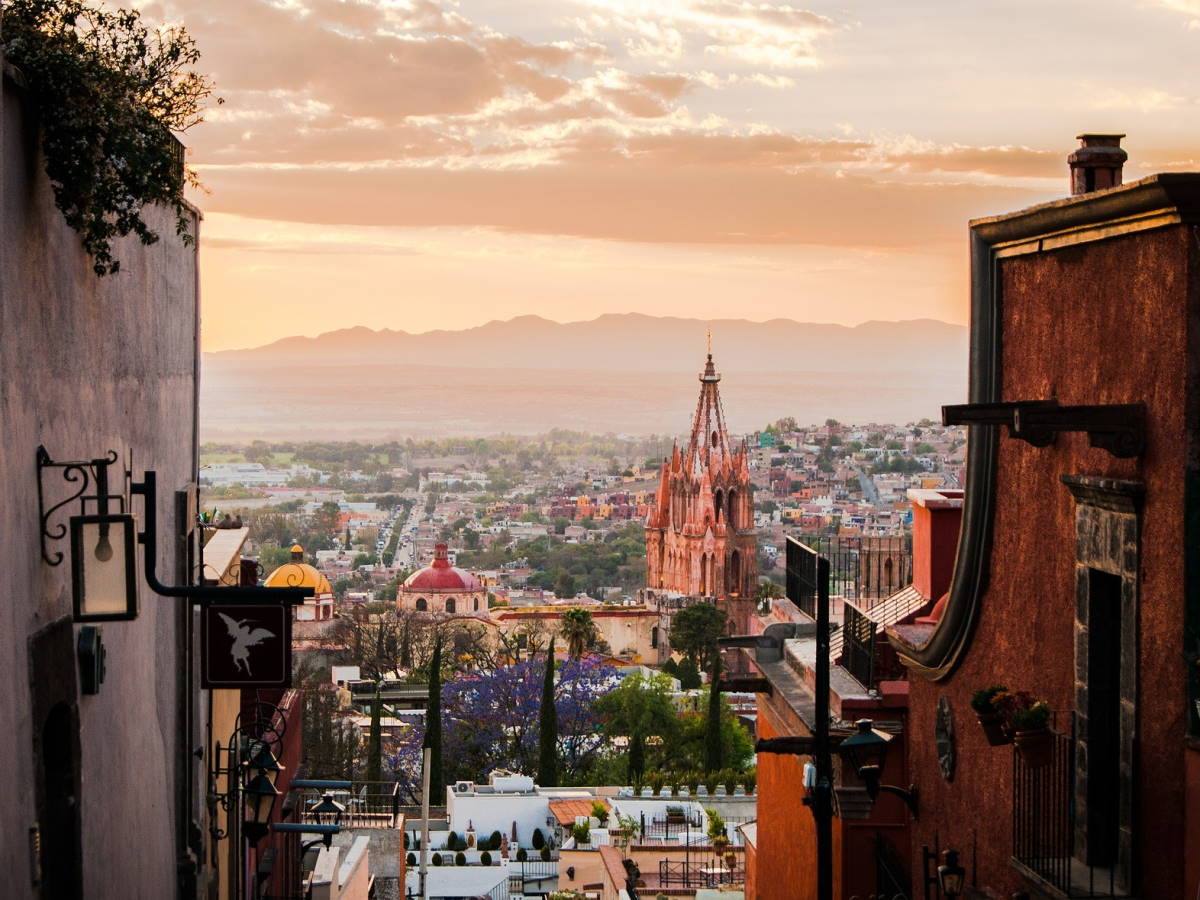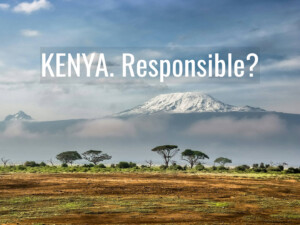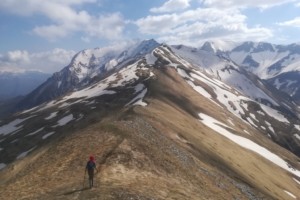To revitalise destinations, awaken the senses

In a globalised world in which if suburban shopping centres on opposite sides of the planet were to switch places overnight there would be very few differences for locals to get used to, what does it take to rebuild uniqueness in destinations?
Michael Haywood appeals to the senses.
It’s a “Good Tourism” Insight. [You too can write a “GT” Insight.]
Tourism’s “Big Shift” is a clarion call to “Build Back Better”.
But are obvious opportunities being ignored?
If the intent is to accelerate transformation and achieve magnificence, what exactly is required if communities are to surmount survival and ensure revival?
Communities definitely need new economic strategies to support small businesses; bring commerce back to downtowns and streetscapes; and, to galvanise investment in infrastructure and climate change initiatives.
They also require strategies that catalyse the power of pull (access and attraction).
And, inevitably, they need strategies that revitalise tourism development by marrying finance with the contextually-appropriate and culturally-rich knowledge and capabilities embedded within communities.
Don’t miss other “GT” posts tagged with
“Destination marketing”
To succeed as destinations, communities have to be truly compelling.
But what does ‘compelling’ mean in the context of a sense of place within a disruptive world? And for visitors and citizens?
Participatory performance practices certainly help, and can add to the experience of places, but what is it about certain festivals, marketplaces, and fashionable activations that stimulate people’s senses and pleasure areas?
We often talk about the character of places, their essential spirit, ambiance, resonance, presence, or charm. But what is it about them that actually makes people feel alive?
Pleasurable experiences certainly contribute to public happiness. They restore connectivity that is organic to our lives. But what is it about these experiences that fosters place-attachment and feelings of belonging?
Also see K Michael Haywood’s other “GT” Insights, including
“Tourism’s challenge: How do we create ‘community shared value’?”
The survival of destinations depends not only on return visits and habitual patronage (the ability to catalyse virality), but also their ability to create public value.
Multi-sensory experiences are tourism’s stock-in-trade, but what more must marketers do to position destinations’ sensory appeal to create effective value propositions?
If DMOs are adamant about creating community shared value, what must they do to enliven sensory components in ways that have deep meaning to all stakeholders?
We all want our communities to have and demonstrate an expressive vitality.
If our intention is to build avid communities of regular visitors and supportive stakeholders, what more can be done to ensure our visitors and citizens experience a place through feeling, imagination, memory, intellect and the senses?
How can we nurture unique and powerful community-as-destination identities?
The riddle of identity
When travelling for pleasure, it’s hard to avoid critical analysis.
As travellers we’re conscious as to how tourism can degrade the rich diversity of natural and cultural landscapes, including the regional identity of so many communities.
Whether such a criticism applies to Mexico’s San Miguel de Allende, for example, is debatable, yet it is inevitable that tourism, as a form of economic development, would impose itself and modify the “Best Small City in the World”.
Please read my “Reflections on the ‘best small city in the world’: San Miguel de Allende”, a “GT” Travel Experience I penned for The “GT” Travel Blog. [Use the same sign in details for “GT” Travel that you use for “GT”.]
In this I offer my first impressions of a place my wife and I would revisit six times.
See K Michael Haywood’s “GT” Travel Experience
“Reflections on the ‘best small city in the world’: San Miguel de Allende”
But the Canadian former figure skating champion and artist, the late Toller Cranston, whose home and studio we visited that first time, called attention to his disquiet:
“Sleepy and innocent San Miguel has become a precocious teenager; I’m not coping as well as I once did.”
It is evident that in San Miguel de Allende, as in anywhere at all, profound ambiguities of experience exist. Perspectives differ.
For my wife and I, the town awakened in us “a newfound awareness of ourselves, a wonderment, and a fresh connectivity to the people and things around us”.
For Cranston, the honeymoon was over; change in his chosen home town was grating.

Everyone lives different realities, revealed through silent languages, hidden dimensions, and the dance of life.
As Edward Hall states: “We are tied together by invisible threads of rhythm, yet isolated from each other by hidden walls of time [which is] an organizer of activities, a synthesizer and integrator, and a special language that reveals not only how we really feel about each other, but the differences between cultures”.
In pondering the structure of experience and trying to grasp how the features of people’s differing experiences fit together, the riddle that is San Miguel confounds.
Can it be the “Best Small City in the World” without acknowledgement from its citizens? Will such a statement of praise hasten the inevitability of untoward consequences: gentrification, exclusion, over-tourism, a degrading of culture and tradition.
Don’t miss other “GT” posts tagged with
“Policy and governance”
For tourism authorities, politicians, and developers, you could say “Best Small City” serves their interests.
Fortunately, tourism development has remained constrained, reflecting the intent to maintain a harmonious relationship with the regional vernacular; a respect (and UNESCO requirement) that has served to cultivate a degree of trust in the political and economic system.
But for how long?
Perhaps strangely, the expat community has taken that trust seriously.
Over the decades they have been very influential as guardians of San Miguel’s regional identity and its historic and cultural integrity.
Through the formation of NGOs and various educational and entrepreneurial initiatives, expatriates have provided socially, culturally, and environmentally focused oversight.
Senses, sentiments, and sensibilities … by design
Few places may be as blessed as San Miguel de Allende.
But what are the lessons to be learned?
A first order priority is not to approach the “Big Shift” as a massive problem to be solved per se, but as a riddle to be understood.
As experiences of places differ, so we are obliged to take into account all the variations in people’s feelings, imaginations, and memories if we are to revitalise destinations.
This means understanding how our inner senses, 19 at least, respond to stimuli from our external environments; how we interpret them as positive, or not.
As we set about fulfilling people’s practical needs, while blending them with desired work and leisure activities, our goal should not simply be to revitalise tourism, but to revitalise people’s lives.
Also see K Michael Haywood’s other “GT” Insights, including
“Smart clusters: How destinations can organise for a better future”
Consideration must be given to people’s sense of place; how their emotions affect quality-of-life and overall well-being; even how they can create disorder through feelings of detachment and insignificance.
As such, intentional change in an unpredictable world requires being acutely aware of how we accept, influence, and exist as parts of each other’s nature.
Intentional change requires that we recognise how our communities and places are repositories of feelings and meanings that energise our experiences, social dynamics, patterns of movement, cultures and traditions, and environmental possibilities.
Such a focus requires a coherent consistency of purpose for tourism, particularly when it is selected as a prime tool for economic development, and as we design products and experiences.
For instance, we accept tourism’s products as core to the creation of value so long as we find them appealing.

Further, as with places, we want tourism experiences as meaningful, intuitively and socially engaging, and vital in life-affirming ways … In other words, human-friendly.
Wherever one goes, boredom is seen as an affliction to be avoided. Even grand designs, if they demean or destroy our attachment to place, should be denounced. Vitality matters, but it has to be felt, found, and fashioned.
Consider “dark value”; hidden natural or cultural attributes (Italy – Made with Love) so prevalent in traditional folkways and performances, as in San Miguel.
This is a wonderment that cannot be found in words but in a spirit that spurs exuberant virality; the essence and outcome of an expressive experience economy.
Through our own senses we become aware of how the outside world affects us.
Also see Bjørn Z Ekelund’s “GT” Insight
“In the eye of the beholder: How to create valuable tourism experiences”
As such, we have an obligation to be more cognizant of how others’ fulfill their needs in particular places; what excites or dissipates their energies; how the hidden and the obvious aspects of places affect senses, moods, and behaviors.
So, as we set out to revitalise, let’s rediscover what is vital to our communities-as-destinations, our destinations-as-communities; their expressive intelligibility, their sensory, moral, and emotional experience capabilities.
Let’s take into account the riddle of identity of place so as not to compromise the integrity of place.
Let’s co-create expressive features in places that astonish and resonate.
Let’s promote sensibilities that serve to define what it means to be a “compelling community”; a community-as-destination capable of realising net positive shared value that benefits all.
This may be but one important step in the transition from mediocrity to magnificence, but it is the one driving us, as sentient beings, to be adventurers among the senses.
What do you think? Share a short anecdote or comment below. Or write a “GT” Insight. The “Good Tourism” Blog welcomes diversity of opinion and perspective on travel & tourism because travel & tourism is everyone’s business.
Featured image (top of post): Awaken the senses. Image by geralt (CC0) via Pixabay.
About the author

K Michael Haywood is Professor Emeritus, School of Hospitality, Food and Tourism at the University of Guelph in Ontario, Canada. Prof Haywood has recently written an e‑book “Astonish, Smarter Tourism by Design”. Find Michael on LinkedIn.





